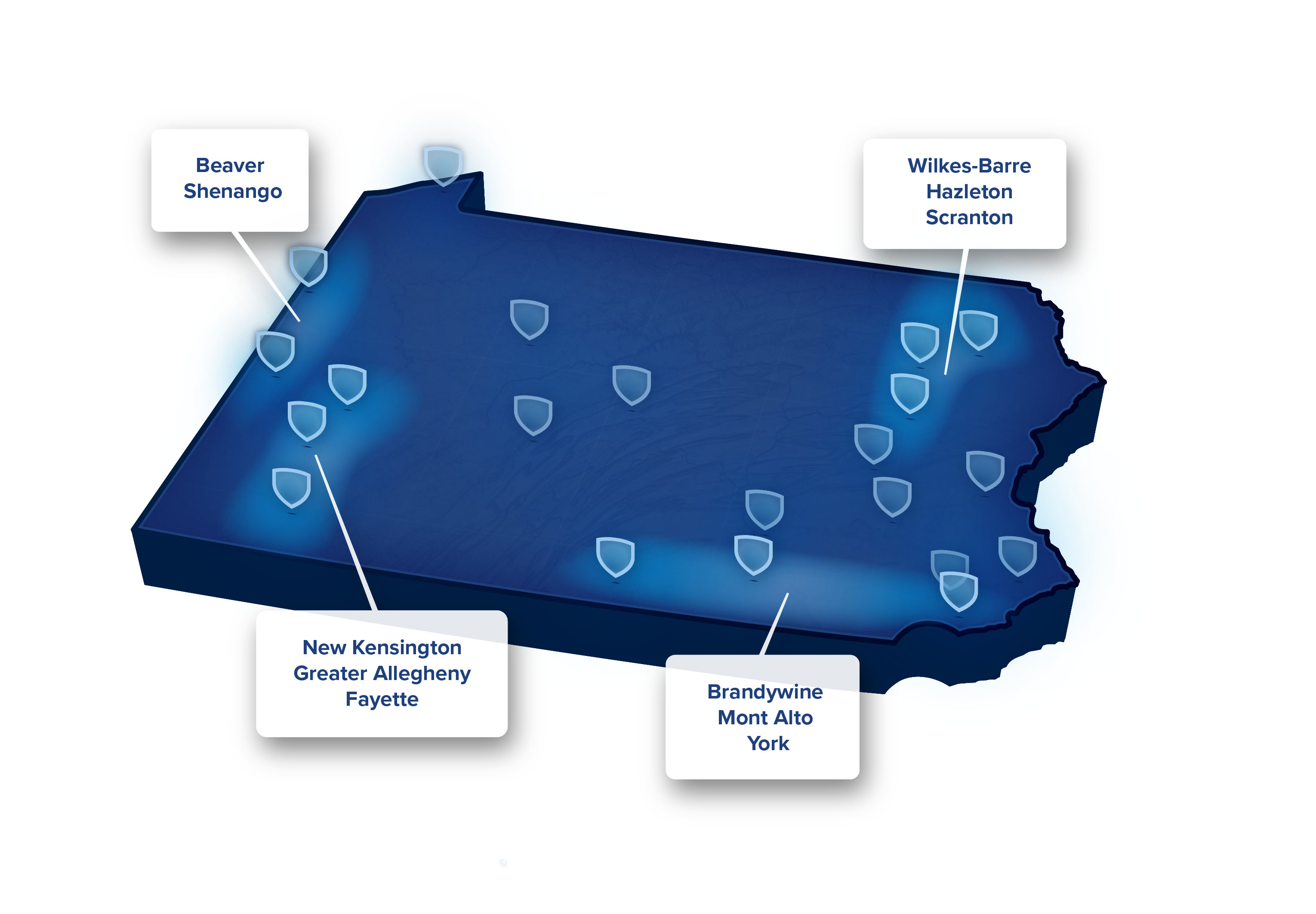Participation in the University’s Voluntary Separation Incentive Program creates opportunity to streamline administrative leadership; Bendapudi commits up to $20M to ease deficit, provide extra time to fully balance the Commonwealth Campus budget
See the link below. From the article:
“UNIVERSITY PARK, Pa. — With the enrollment period closed for the University’s Voluntary Separation Incentive Program (VSIP), Penn State’s administration is moving forward with its transformation of operations for its Commonwealth Campuses, including a new shared regional administrative model that will create efficiencies across campuses and help reduce expenditures, optimized service teams and a one-time infusion of up to $20 million in additional funding.
Across Penn State’s Commonwealth Campuses, enrollments have declined in aggregate by about 24% over the last 10 years, with all but two campuses experiencing losses of between 16% and 50% over that same period. As the population of college-aged adults continues to decline, colleges and universities across the country are bracing for enrollment challenges to continue. Penn State’s thoughtful approach to these challenges is to avoid more draconian measures seen at other institutions across the country.
“Penn State has been making adjustments to address the reality of changing demographics in Pennsylvania and across the country, but these small changes are not enough to position the University for the long term," said Margo DelliCarpini, vice president for Commonwealth Campuses and executive chancellor. “We have to make fundamental changes that create the most efficient organization possible in delivering on Penn State’s mission.””
And,
”Due in part to declining enrollments, the overall budget for Penn State’s Commonwealth Campuses has a $49 million aggregate deficit. The University’s Board of Trustees has expressed the desire to see the institution’s overall budget deficit resolved by June 30, 2025. The Commonwealth Campus VSIP was launched as a tool to help reduce that deficit by incentivizing employees to depart Penn State to pursue other opportunities or retire.
In all, 383 employees, or about 21% of those who were eligible across the commonwealth, opted for the VSIP, resulting in an overall 10% reduction in personnel. About 77% of employees participating in the VSIP were staff. The dollar value of salary and fringe expense associated with these 383 employees is $43 million, however, actual savings will not be known until later in the year when University leaders know which positions will be backfilled.”
And,
”With several chancellors retiring, leaving the University for other positions or having opted in to the VSIP, Penn State has the opportunity to streamline its Commonwealth Campus leadership structure to reduce administrative overhead, leverage regional opportunities and provide enhanced collaboration across locations. This summer, working with campus leadership, DelliCarpini will implement the regional leadership model — specifically focused on the University College. The model will prioritize a robust Penn State experience for students and provide consistent administrative and support services that make the University’s teaching, research and service mission possible.”

At this rate, we could fail because we won’t be too big.
See the link below. From the article:
“UNIVERSITY PARK, Pa. — With the enrollment period closed for the University’s Voluntary Separation Incentive Program (VSIP), Penn State’s administration is moving forward with its transformation of operations for its Commonwealth Campuses, including a new shared regional administrative model that will create efficiencies across campuses and help reduce expenditures, optimized service teams and a one-time infusion of up to $20 million in additional funding.
Across Penn State’s Commonwealth Campuses, enrollments have declined in aggregate by about 24% over the last 10 years, with all but two campuses experiencing losses of between 16% and 50% over that same period. As the population of college-aged adults continues to decline, colleges and universities across the country are bracing for enrollment challenges to continue. Penn State’s thoughtful approach to these challenges is to avoid more draconian measures seen at other institutions across the country.
“Penn State has been making adjustments to address the reality of changing demographics in Pennsylvania and across the country, but these small changes are not enough to position the University for the long term," said Margo DelliCarpini, vice president for Commonwealth Campuses and executive chancellor. “We have to make fundamental changes that create the most efficient organization possible in delivering on Penn State’s mission.””
And,
”Due in part to declining enrollments, the overall budget for Penn State’s Commonwealth Campuses has a $49 million aggregate deficit. The University’s Board of Trustees has expressed the desire to see the institution’s overall budget deficit resolved by June 30, 2025. The Commonwealth Campus VSIP was launched as a tool to help reduce that deficit by incentivizing employees to depart Penn State to pursue other opportunities or retire.
In all, 383 employees, or about 21% of those who were eligible across the commonwealth, opted for the VSIP, resulting in an overall 10% reduction in personnel. About 77% of employees participating in the VSIP were staff. The dollar value of salary and fringe expense associated with these 383 employees is $43 million, however, actual savings will not be known until later in the year when University leaders know which positions will be backfilled.”
And,
”With several chancellors retiring, leaving the University for other positions or having opted in to the VSIP, Penn State has the opportunity to streamline its Commonwealth Campus leadership structure to reduce administrative overhead, leverage regional opportunities and provide enhanced collaboration across locations. This summer, working with campus leadership, DelliCarpini will implement the regional leadership model — specifically focused on the University College. The model will prioritize a robust Penn State experience for students and provide consistent administrative and support services that make the University’s teaching, research and service mission possible.”

At this rate, we could fail because we won’t be too big.


